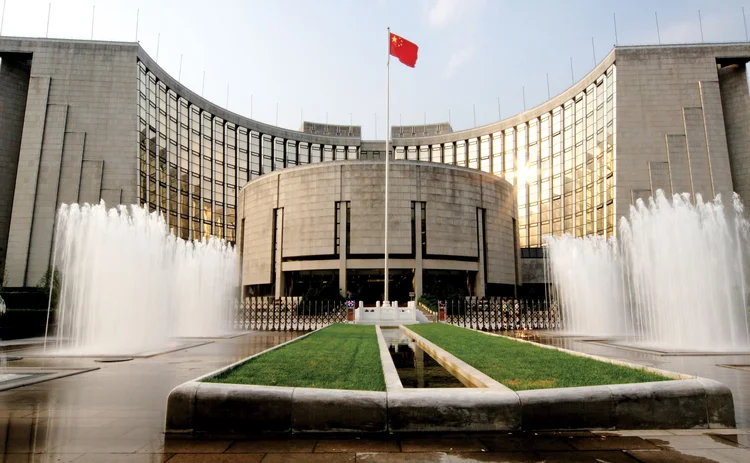China maintains dovish stance amid disinflation pressure
PBOC trims MLF 10 bps to 2.35%; (SHA:601939) and (SHE:000001) lead modest CSI 300 gain as China defends 4.4% growth amid CNY stability.

The People’s Bank of China reaffirmed its commitment to accommodative monetary policy as growth momentum softened to 4.4% y/y in Q3 2025. The central bank pledged to maintain “reasonable and ample liquidity,” signaling further medium-term lending facility (MLF) operations and selective reserve-requirement reductions.
Mechanistically, the PBOC seeks to offset credit drag from the property-sector contraction and weak private investment. Real estate investment fell 8.6% y/y, while private fixed-asset formation slowed to 1.9%. In response, the 1-year MLF rate was trimmed 10 bps to 2.35%, and targeted relending quotas of CNY 500 billion were expanded to support small manufacturers and green projects.
Despite modest easing, monetary transmission remains uneven. Large state banks increased lending 6.8% y/y, but smaller city commercial banks faced liquidity mismatches. Aggregate financing growth decelerated to 8.4%, the slowest in two decades. The CNY remained stable near 7.27 per USD as intervention offset capital-outflow pressure.
The macro implication is that Beijing prioritizes credit quality and employment stabilization over headline stimulus. Unemployment edged down to 5.0%, supported by infrastructure hiring and rural microfinance. Consumer prices rose 0.6%, signaling persistent disinflation risk. With policy rates at record lows, real yields on 10-year CGBs (SSE:000012) are marginally positive (+0.4%), preserving room for moderate easing without destabilizing the yuan.
Equity markets reacted cautiously. The CSI 300 gained 0.8%, led by state-owned banks (SHA:601939, SHE:000001) and renewables manufacturers. However, property developers remained under strain; credit spreads on Bloomberg China High Yield Index widened 22 bps to 11.7%. Offshore investors maintained net inflows of USD 1.2 billion through Stock Connect, signaling selective confidence in policy continuity.
Historically, similar accommodative pledges in 2015–16 preceded a mini-cycle recovery as liquidity transmission improved. Yet structural headwinds — demographic slowdown, debt overhang near 285% of GDP, and weak household sentiment — limit multiplier effects.
The signal from the PBOC is institutional continuity amid global divergence. While the Fed and ECB anchor rates above 4%, China’s dovish stance positions the CNY yield curve as a relative carry trade anchor for Asian investors. If credit expansion regains traction and GDP stabilizes near 5% in 2026, capital inflows may reverse, narrowing sovereign-spread differentials by 30–40 bps.
Over the next 12 months, policy credibility will hinge on transmission speed and credit-efficiency ratios. Sustained M2 growth above 9% coupled with rising private investment share would confirm that accommodative rhetoric has translated into real-sector traction.





